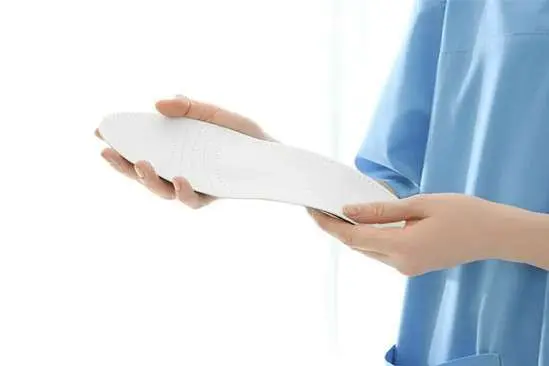
Podiatrists sometimes prescribe orthopaedic shoes to treat plantar deformities and mechanical abnormalities of the foot and leg.
These disorders can lead to musculoskeletal compensation and chronic pain if left untreated.
See the situations in which orthopaedic shoes are prescribed and how they are made.
The various types of orthopaedic shoes
The pathologies that can affect the feet are as many as the people who are prone to them.
For this reason, orthopaedic shoes have evolved to accommodate as many people as possible.
Here is a list that lists different orthopaedic shoes that the podiatrist can recommend:
- Orthopaedic street shoes that are more compatible with the office environment and social events
- Orthopaedic shoes for children, which can be used to correct plantar deformities early on, while the child is still growing
- Orthopaedic work shoes that allow more active workers to enjoy continued comfort
- Orthopaedic custom shoes, which are used primarily for patients with more severe plantar problems
Prefabricated orthopaedic shoes, which are effective when foot conditions are not very bothersome. These are usually less expensive than their custom-made counterparts.
What can we treat with orthopaedic shoes?
Orthopaedic shoes work both actively and passively, much like foot orthoses.
Thus, they can correct pronation and limit the negative effects of plantar deformity without hindering the wearer’s movements.
Pathologies that can be treated with orthopaedic shoes include:
The flat foot or the cavus foot
Asymmetrical legs
Bunion (hallux valgus)
Deformities caused by diabetic foot or arthrosis
Pain in the lower back
Joint pain in the ankles, knees or hips
Poor posture
Orthopaedic shoes may be used in addition to other forms of podiatric treatment if more than one problem is present.
The benefits of choosing orthopaedic shoes
It is entirely possible to opt for orthopaedic shoes simply to increase your own comfort.
However, many who wear these types of shoes do so because of an underlying plantar problem.
Orthopaedic shoes offer the following benefits when used as intended:
They protect the feet better than regular shoes
Their natural firmness gives the feet more stability and reduces the risk of sprained ankles
They require little aesthetic compromise, since they are sold in a wide range of styles
They wear out less quickly than conventional shoes as they are perfectly adapted to the shape of the foot
They reduce muscle and joint fatigue caused by plantar imbalance
They facilitate recovery after medium or high intensity activities
While these features may appear very attractive, we still recommend you to consult a podiatrist before buying orthopaedic shoes.
They can determine if this is the most appropriate treatment for you, using techniques such as biomechanical examination and 2D/3D scanning.
They will also consider the need to add other therapeutic solutions such as orthotics or therapeutic taping.
The manufacturing process of custom orthopaedic footwear
While they are more costly to manufacture, custom orthopaedic shoes offer relief from complex pain and deformities.
These corrective devices are usually prescribed by the podiatrist, physician, and orthopedist.
However, it is an orthotist who does the shaping and fabrication of the shoe in the lab.
Only at the end of the following process, the orthopaedic custom shoes can be worn:
- The methods for making the shoes are worked out (dimensions, necessary comfort, morphological features to be included and overall esthetics),
- The impression of the feet is molded with plaster strips,
- The technician isolates the casts with a formula of latex and liquid silicone,
- From these new molds, a rough casting is made in resin,
- The prosthetist then proceeds to cast what will be the end of the shoe,
- The preliminary shoe model is molded to give it sufficient rigidity and resistance,
- Corrections are made to the primary form, if necessary,
- The end of the future shoe is sanded to fit the patient’s forefoot,
- The molded part is placed in a vacuum press with the contact material of the shoe and then thermoformed,
- The newly modeled material is stapled, then filled,
- A foam inner shoe and a rigid inner shoe are formed,
- The final pattern of the shoe is designed based on these,
- Materials are selected, then cut,
- The orthopaedic shoe and its sole are assembled,
The manufacturing process of an orthopaedic shoe includes several fittings during production.
If everything goes as planned, the patient can test their new shoes after a few months.
PiedReseau – Learn more
Would you like to find out more about orthopaedic shoes? We regularly publish articles on this subject!
However, while the PiedReseau site is abundant with interesting information, nothing beats a consultation at a real clinic.
Take care of your feet – they are precious!